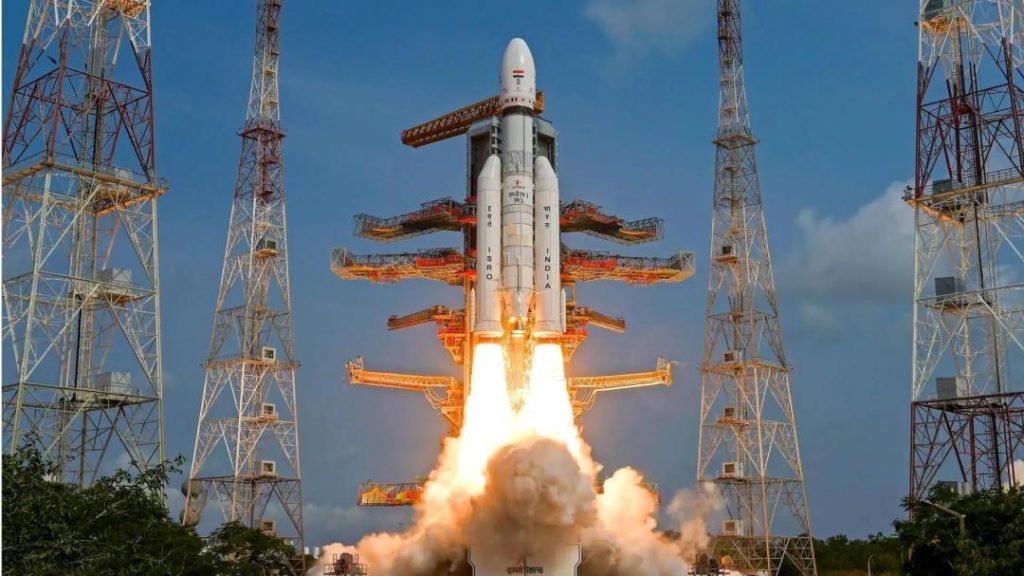
ISRO Working on 40-Storey-Tall Rocket to Boost Satellite Launch Capacity
The Indian Space Research Organisation (ISRO) is making significant progress in developing a new rocket that is set to revolutionize the satellite launch industry. According to recent reports, the ISRO is working on a new rocket that stands as tall as a 40-storey building, designed to carry satellites weighing up to 75,000 kg into low Earth orbit.
The project was revealed by ISRO Chairman V Narayanan during his convocation address at Osmania University in Hyderabad. The development of this new rocket is a significant step towards boosting the country’s satellite launch capacity and further expanding its presence in the global space industry.
The new rocket, which is still under development, is expected to be significantly larger and more powerful than the current rockets used by ISRO. The rocket’s payload capacity of 75,000 kg is unprecedented, and it will enable ISRO to launch satellites that are larger and more complex than ever before.
The development of this new rocket is a testament to ISRO’s commitment to innovation and its goal of becoming a major player in the global space industry. The organization has been working tirelessly to develop new technologies and capabilities that will enable it to compete with the likes of NASA and other major space agencies.
The new rocket is designed to carry a wide range of satellites, including communication, navigation, and Earth observation satellites. The rocket’s payload capacity of 75,000 kg makes it an ideal choice for launching large and complex satellites that require a significant amount of thrust to reach their desired orbit.
In addition to the development of the new rocket, ISRO also plans to launch a 6,500-kg communication satellite for the US using Indian rockets this year. This is a significant milestone for ISRO, as it marks the first time that the organization will be launching a satellite for a foreign country.
The launch of the communication satellite is a result of a collaborative agreement between ISRO and the US-based company, Intelsat. The satellite will be used to provide communication services to customers in the Asia-Pacific region, and it will be launched using ISRO’s workhorse rocket, the PSLV.
The development of the new rocket and the launch of the communication satellite are significant steps towards boosting ISRO’s satellite launch capacity and further expanding its presence in the global space industry. The organization’s commitment to innovation and its goal of becoming a major player in the global space industry make it an exciting time for the Indian space program.
Key Highlights of the New Rocket:
- The new rocket is as tall as a 40-storey building
- The rocket has a payload capacity of 75,000 kg
- The rocket is designed to carry satellites weighing up to 75,000 kg into low Earth orbit
- The rocket is expected to be significantly larger and more powerful than the current rockets used by ISRO
- The rocket will enable ISRO to launch satellites that are larger and more complex than ever before
Conclusion:
The development of the new rocket is a significant step towards boosting ISRO’s satellite launch capacity and further expanding its presence in the global space industry. The rocket’s payload capacity of 75,000 kg makes it an ideal choice for launching large and complex satellites that require a significant amount of thrust to reach their desired orbit.
ISRO’s commitment to innovation and its goal of becoming a major player in the global space industry make it an exciting time for the Indian space program. The launch of the communication satellite for the US is a significant milestone for ISRO, and it marks the first time that the organization will be launching a satellite for a foreign country.
The development of the new rocket and the launch of the communication satellite are significant steps towards achieving ISRO’s goal of becoming a major player in the global space industry. The organization’s commitment to innovation and its goal of becoming a major player in the global space industry make it an exciting time for the Indian space program.
Source:






